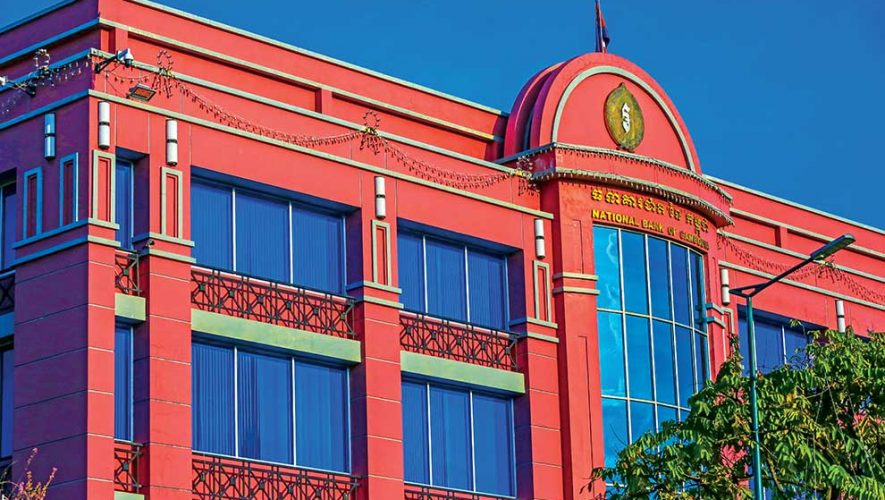When Chevron announced in 2003 that it had struck oil, it sent mixed signals to various stakeholders in Cambodia at that time, such as World Bank and International Monetary Fund as well as the inconquistable non-governmental organisations.
For the latest Cambodian Business news, visit Khmer Times Business
World Bank, in mid-2000 announced that Cambodia could possibly have as much as two billion barrels of oil and 10 trillion cubic feet of gas, an estimate supported by United Nations Development Program.
These estimates were based on prospecting and production works on an estimated exploration area of approximately 37,000 square kilometers of Cambodian waters and a further 27,000 sq km that are in the hotly-contested hydrocarbon deposit buried beneath 80 metres of water and seabed in the Gulf of Thailand.
The more than 27,000 sq km, which includes the Overlapping Claims Area (OCA), lies in the Pattani Basin that is said to be highly rich in hyrdrocarbons. Thailand has already extracted oil and gas from the Pattani Basin while Cambodia has not. Unfortunately, there seems to be no urgency on either party, especially Thailand, to come to an amicable production sharing agreement to allow exploration and eventual production work to commence.
Although it is long known that Cambodia is well-endowed with oil and gas deposit, so far, no production activities have taken place. Dates were set and missed frequently, including the much hyped 12-12-12 date. This is due to political challenges, lack of technical expertise, proper laws and regulations to govern the investments.
By the time Chevron and its partners finished their drilling program at the exploration stage, they had invested an estimated $160 million. Taxation and legal issues as well as disputes within the government’s various stakeholders such as Tax, Ministry of Economy and Finance, Ministry of Industry and the Cambodian National Petroleum Authority were additional factors.
In the meantime, other companies involved in territorial waters gave up their concessions over a combination of factors such as difficulty in extracting oil (had they discovered it) when several concession holders failed to hit oil or gas, but sand instead. Others felt it was not commercially viable, given the depressed crude oil prices.
These issues were only resolved recently when KrisEnergy Ltd, after many rounds of discussion and negotiation, managed to enter into a production permit application, which followed a petroleum agreement signed in 2017 and subsequently, a final investment decision.
Towards the end of 2018, KrisEnergy’s wholly-owned subsidiary SJ Production Barge Ltd contracted Keppel Shipyard Ltd for the modification and upgrading of its production barge for the Apsara oil development project located in the Block A concession area, thus far the only known big ticket announcement.
Prior to this, seven prospective areas (fields) in Cambodia Block A had been identified using 3D seismic interpretation and exploration drilling. These prospective areas are complexes of north-south trending fault blocks with multiple-stacked reservoirs in individual fault blocks.
There has been substantial geological and geophysical work undertaken in the block as well as exploration and appraisal drilling. In addition to vintage 2D seismic data, three separate 3D seismic acquisition surveys were undertaken, recording 865 sq km in 1994, 548 sq km in 1995 and 2,648 sq km in 2003.
To fuel further speculation, World Bank said in 2005 that Block A’s estimated reserves could total up to an estimated 500 million barrels of oil and two to three trillion cubic feet of gas. It also estimated that total hydrocarbon reserves in Cambodia might even be as high as two billion barrels of recoverable oil and 10 trillion cubic feet of gas.
“These estimates have no basis and are in fact misleading as there is no scientific or technical data to support these estimates. The reserves may be higher or it may even be lower, depending on the fault lines, the accessibility and concentration of the reservoirs.
“In fact, the estimates have been proven wrong by KrisEnergy which said Block A does not contain any gas, and is in fact, all crude, based on available technical data and drill results,” says an industry insider.
He adds that there should not be any speculation on the reserves until and unless KrisEnergy announces capital expenditure for big-ticket items which in practice might not be ready within the remaining seven months’ time frame for the company to start work.
Cambodia has a resource curse in the form of unchartered or little explored mineral deposits which, if discovered and explored, could be a game changer for Cambodia’s economy, he says.
“Unfortunately, when big players like Australian BHP Group Ltd abandon projects such as that in Mondulkiri for bauxite, it sends a lot of negative publicity and questions why a huge entity would abandon its project despite announcing ambitious plans.
“The oil and gas sector is no different. You need to see the first drop of oil. Hopefully, this will form a controlled rush for the remaining blocks, B to F (Block F is partially on shore), and a push by the Cambodian government to encourage the Thais to resolve the OCA issue,” he says.
This is pertinent on the basis that the Thai side of the OCA contains rich hydrocarbons, meaning that the Cambodian side would certainly contain reserves unless the Thai side reservoir is connected to the Cambodian side.
“If that happens, technically plausible but not probable, we might end up disappointed as the reserves may be low and could only become viable 10 years or so from now when the blocks, if explored and enters production stage, are capped and abandoned,” he explains.
The industry insider adds that KrisEnergy has a conservation estimate of 8,000 barrels of crude per day, probably sweet Brent crude, but cautioned that this were just estimates put out by the company.
“If KrisEnergy is indeed successful, and the government is hoping that it will be, the results that can be achieved from the execution of the project which could be the catalyst for development and activities in other blocks, both onshore and offshore.
“But it all depends on the first drop of oil being brought to the surface by KrisEnergy by 2020, the prevailing crude prices at that time, international oil reserves, and a host of other factors that could make or break the oil and gas industry in Cambodia,” he stresses.




